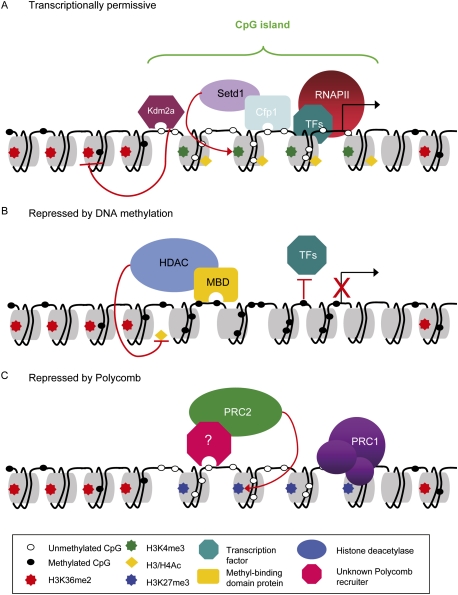Figure 4.
The chromatin state at CGIs. (A) CGIs usually exist in an unmethylated transcriptionally permissive state. They are marked by histone acetylation (H3/H4Ac) and H3K4me3, which is directed by Cfp1, and show Kdm2a-dependent H3K36me2 depletion. Nucleosome deficiency and constitutive binding of RNAPII may also contribute to this transcriptionally permissive state. (B) DNA methylation is associated with stable long-term silencing of CGI promoters. This can be mediated by MBD proteins, which recruit corepressor complexes associated with HDAC activity, or may be due to directed inhibition of transcription factor binding by DNA methylation. (C) CGIs can also be silenced by PcG proteins and may be key elements involved in polycomb recruitment. An unknown CGI-binding factor could be responsible for recruiting PRC2 to CGIs that then trimethylates H3K27. This H3K27me3 is recognized by PRC1 complexes that act to impede transcriptional elongation, thereby silencing genes. Note that the transcriptionally permissive and polycomb-repressed states can coexist at bivalent CGIs, predominantly in totipotent embryonic cells.

